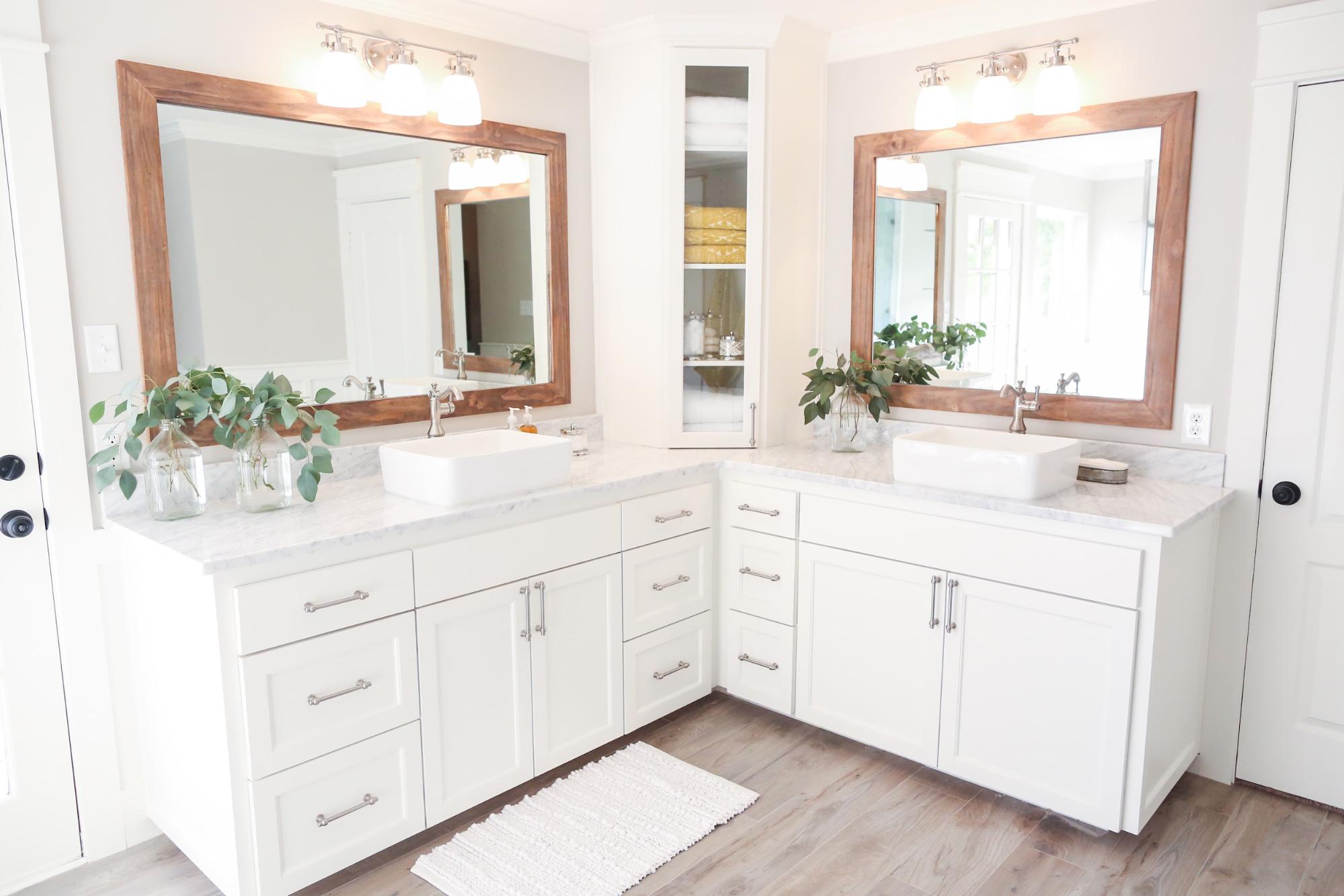Corner Bathroom Sink and Vanity Design Options

Corner bathroom sink and vanity – When designing a corner bathroom, the sink and vanity play a crucial role in maximizing space and creating a functional and stylish space. Corner bathroom sinks and vanities come in a variety of shapes, sizes, materials, and styles, allowing homeowners to customize their bathroom to suit their specific needs and preferences.
The corner bathroom sink and vanity, a practical choice for space-saving, can be transformed into a stylish statement with the addition of a backsplash. Whether you opt for classic subway tiles or a mosaic of intricate patterns, exploring bathroom sink backsplash ideas will inspire you to create a cohesive design that complements your corner bathroom sink and vanity, elevating it from functional to fabulous.
Shapes and Sizes
Corner bathroom sinks are typically designed to fit snugly into the corner of the room, saving valuable space. They come in a variety of shapes, including triangular, L-shaped, and quarter-circle, to accommodate different bathroom layouts and sizes. The size of the sink will depend on the available space and the desired functionality.
Corner bathroom sink and vanity units offer a space-saving solution for smaller bathrooms. If you’re looking for a more modern and stylish option, consider a bathroom vanity with vessel sink. These vanities feature a sink that sits on top of the counter, creating a sleek and contemporary look.
You can also find corner bathroom sink and vanity units with built-in storage, making them a great choice for maximizing space in your bathroom.
Materials, Corner bathroom sink and vanity
Corner bathroom sinks and vanities can be made from a variety of materials, each with its own unique characteristics and benefits. Porcelain and ceramic are popular choices due to their durability, ease of cleaning, and resistance to stains and scratches. Glass sinks offer a sleek and modern look, while stone sinks add a touch of natural elegance. Solid surface materials, such as quartz and acrylic, are also gaining popularity due to their durability, non-porous nature, and wide range of color and pattern options.
Styles
Corner bathroom sinks and vanities come in a variety of styles to complement different bathroom decors. Traditional styles feature ornate details and classic lines, while modern styles are characterized by clean lines and minimalist designs. Contemporary styles blend elements of both traditional and modern styles, creating a timeless and sophisticated look.
Functionality and Storage Considerations

Corner bathroom sinks and vanities offer unique advantages in terms of space optimization and functionality. Their compact design allows for efficient utilization of available space, making them ideal for smaller bathrooms or those with awkward layouts.
When choosing a corner bathroom sink and vanity, it’s crucial to consider the specific dimensions and shape of your bathroom to ensure a harmonious fit. A well-proportioned vanity will complement the space without overwhelming it.
Storage Options
Corner bathroom vanities often feature innovative storage solutions that maximize space utilization. Drawers, shelves, and cabinets are strategically placed to provide ample storage for toiletries, linens, and other bathroom essentials. These compartments keep the bathroom organized and clutter-free.
Installation and Maintenance

Installing a corner bathroom sink and vanity involves careful planning and precise execution. The process generally includes:
1. Planning and Preparation: Determine the optimal location for the sink and vanity, ensuring sufficient space for both functionality and aesthetics. Prepare the area by removing any existing fixtures and ensuring proper plumbing and electrical connections.
2. Assembling the Vanity: Assemble the vanity cabinet according to the manufacturer’s instructions, ensuring a sturdy and level base.
3. Installing the Sink: Position the sink over the vanity and connect it to the plumbing fixtures. Secure the sink using the provided hardware and sealant.
4. Attaching the Vanity to the Wall: For added stability, anchor the vanity to the wall using brackets or screws.
Maintaining a corner bathroom sink and vanity requires regular cleaning and occasional maintenance. Here are some tips:
1. Daily Cleaning: Wipe down the sink and vanity surfaces with a damp cloth to remove dirt and grime. Use a mild cleaning solution for stubborn stains.
2. Regular Deep Cleaning: Periodically perform a deep cleaning using a bathroom cleaner and a soft brush. Pay attention to areas prone to water stains or soap scum buildup.
3. Hardware Maintenance: Check and tighten any loose screws or handles to prevent wear and tear.
4. Plumbing Inspection: Inspect the plumbing connections regularly for leaks or damage. Contact a plumber if necessary for repairs.
5. Vanity Protection: Protect the vanity from moisture damage by using a sealant around the sink and faucet areas.
Potential challenges during installation or maintenance include:
1. Limited Space: Corner bathrooms often have limited space, making it crucial to plan carefully and choose fixtures that fit the available area.
2. Awkward Angles: The angled walls of a corner bathroom can create challenges during installation and maintenance, requiring precise measurements and careful handling.
3. Plumbing Access: Plumbing connections in a corner bathroom may be less accessible, necessitating additional effort or professional assistance during maintenance or repairs.